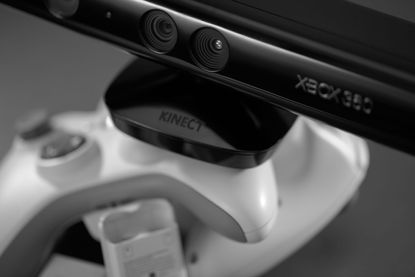What Microsoft's ill-fated Kinect can teach us about disruption
A revolutionary product is not enough


They say that irony is dead, but at least in the tech world it is still alive and well. The latest example: Just as hype builds for the release of the iPhone X with its FaceID system, news slipped out that Microsoft has cancelled production of the Kinect.
As symbolism goes, it's almost a bit too on the nose. The Kinect, a camera and microphone system that worked to recognize users of Microsoft's Xbox One, was for a while the fastest selling consumer device in history. But though it sold well, it not only never fully delivered on its promise of motion gaming or voice control, it also turned off the console's core gamer base. Meanwhile, just as the chapter closes on that tech, Apple appears to have polished facial recognition technology enough to have users log in and verify their identity simply by showing the phone their face. The icing on the cake: Microsoft released a phone with facial recognition two years ago. It sold abysmally.
It is tempting to take this as another example that Apple always gets right what Microsoft gets wrong. There is certainly some truth to that idea — among other missteps, Microsoft arrived at smartphones and tablets long before Apple but failed to capitalize on its headstart. Yet with Microsoft's revenue and stock price higher than ever and general sentiment around the company rebounding significantly, perhaps there is a different lesson here than simply "Microsoft bad, Apple good." Rather, for both Microsoft and the industry at large, it's become clear that genuine, disruptive change doesn't simply involve flashy, disruptive tech by itself. Instead, true change comes with tech that breaks from the past, and ultimately changes how people live, work, and play.
Subscribe to The Week
Escape your echo chamber. Get the facts behind the news, plus analysis from multiple perspectives.

Sign up for The Week's Free Newsletters
From our morning news briefing to a weekly Good News Newsletter, get the best of The Week delivered directly to your inbox.
From our morning news briefing to a weekly Good News Newsletter, get the best of The Week delivered directly to your inbox.
Kinect, for example, was technically impressive — revolutionary, even, when it first debuted in 2010. It could recognize people by body type and shape and its most recent iteration had precise motion tracking. Where it failed, however, was in the broader context in which it was used: Not only were Kinect games lackluster, the practical features of the device, meant to turn the Xbox into a multimedia machine you could control with your voice, were always subpar. People were being asked to change how they gamed or used a console, but without sufficient reward.
It is corporate culture that is to blame. The bulk of Microsoft's problem as a company is that it appears to always be guided by a single question: How can we take what we already have and adapt it to what's new? That may superficially be a reasonable stance, but it often slows or distorts development because instead of reacting to what people actually want, Microsoft jerry-rigs new solutions into its existing platforms. For example, Slack became a billion-dollar business while Microsoft tinkered with Lync and Skype for Business before finally releasing a viable competitor in its Teams product. Similarly, Microsoft was unable to compete in mobile email until it bought out startup Accompli and renamed its app Outlook, acquiring something novel and game-changing which it was unable to produce itself. Then there was its disastrous mobile efforts that were hamstrung by repeated reboots and poor software support.
Unfortunately for Microsoft, its history as a company is full of mistakes and retrenchments similar to this latest one. Microsoft purchased Skype for $8.5 billion in 2011, but has since been eclipsed in the consumer messaging market by WhatsApp, iMessage, and numerous other apps. Its business communication software has gone through numerous iterations, but any innovative, forward-looking company is already using Slack.
The difference lies in the fact that innovative, small startups aren't hampered in the same way. Instead of thinking about how to work within their existing systems, they can start with one useful question: What do people want? That's the question that leads to better apps for email, like the aforementioned Accompli, or Spark, and Calendars like Fantastical or Google Calendar.
But there's a further, more important effect of not being tethered to the past. Instead of wondering what do people want now, companies are also free to ask "what might people want if they could do what they need to in a whole new way?"
Consider: Coda is a new work collaboration startup that seeks to blow up Excel and Microsoft Office. Instead of a traditional spreadsheet focused on rows and columns full of individual cells, Coda lets users throw in anything anywhere by switching paradigms to objects in an adaptable document: spreadsheets, online maps, graphs, images, and text all work within the same digital space.
Whether or not Coda will succeed is anybody's guess. But it isn't simply that the software represents an ideal of a newer, better version of Excel. Rather, it stands for a new model that emerges from being unshackled from legacy and not having to simply iterate on what came before. Instead of asking users to do what they already do, just a little more efficiently, new products like Slack or Coda provide an entirely new approach to existing problems by thinking beyond the constraints of particular forms like "an email" or "a spreadsheet," and instead reframe both what work people do and the context within which they do it. They are new tools that create new cultural forms.
In that sense, disruption is more like a destructive, perpendicular slash across an existing business model than it is an evolution. It breaks old ideas rather than merely augmenting them. It's a pattern we've seen numerous times over the past couple of decades: from the smartphone upending not just computing but photography and music, to Facebook and Twitter disrupting news.
As for Microsoft, however, perhaps it is finally starting to learn this lesson. As it becomes increasingly inevitable that companies will be drawn away from traditional Office and Windows and into new collaborative, digital tools, Microsoft is shifting its entire company to focus on the cloud, machine learning, and data. It's a necessary shift, but one that will have to consider not just what capabilities Microsoft has now or what users are doing at the moment, but how those things will change in the future. It is a key difference between reaction and foresight. After all, Kinect had more than one sophisticated camera — what it lacked, however, was vision.
Create an account with the same email registered to your subscription to unlock access.
Sign up for Today's Best Articles in your inbox
A free daily email with the biggest news stories of the day – and the best features from TheWeek.com
Navneet Alang is a technology and culture writer based out of Toronto. His work has appeared in The Atlantic, New Republic, Globe and Mail, and Hazlitt.
-
 Labour's Brexit conundrum
Labour's Brexit conundrumThe Explainer Keir Starmer backs 'twin track' strategy – build closer security ties with EU while ruling out single market, customs union and free movement
By The Week UK Published
-
 6 scenic white water rafting destinations to get your heart racing
6 scenic white water rafting destinations to get your heart racingThe Week Recommends Have a rip-roaring time on the water
By Catherine Garcia, The Week US Published
-
 Dangerous substances in Lunchables are raising concerns over children's health
Dangerous substances in Lunchables are raising concerns over children's healthIn the Spotlight High levels of lead and sodium were recently found in the snack packages
By Justin Klawans, The Week US Published
-
 The pros and cons of noncompete agreements
The pros and cons of noncompete agreementsThe Explainer The FTC wants to ban companies from binding their employees with noncompete agreements. Who would this benefit, and who would it hurt?
By Peter Weber Published
-
 What experts are saying about the economy's surprise contraction
What experts are saying about the economy's surprise contractionThe Explainer The sharpest opinions on the debate from around the web
By Brendan Morrow Published
-
 The death of cities was greatly exaggerated
The death of cities was greatly exaggeratedThe Explainer Why the pandemic predictions about urban flight were wrong
By David Faris Published
-
 The housing crisis is here
The housing crisis is hereThe Explainer As the pandemic takes its toll, renters face eviction even as buyers are bidding higher
By The Week Staff Published
-
 How to be an ally to marginalized coworkers
How to be an ally to marginalized coworkersThe Explainer Show up for your colleagues by showing that you see them and their struggles
By Tonya Russell Published
-
 What the stock market knows
What the stock market knowsThe Explainer Publicly traded companies are going to wallop small businesses
By Noah Millman Published
-
 Can the government save small businesses?
Can the government save small businesses?The Explainer Many are fighting for a fair share of the coronavirus rescue package
By The Week Staff Published
-
 How the oil crash could turn into a much bigger economic shock
How the oil crash could turn into a much bigger economic shockThe Explainer This could be a huge problem for the entire economy
By Jeff Spross Published